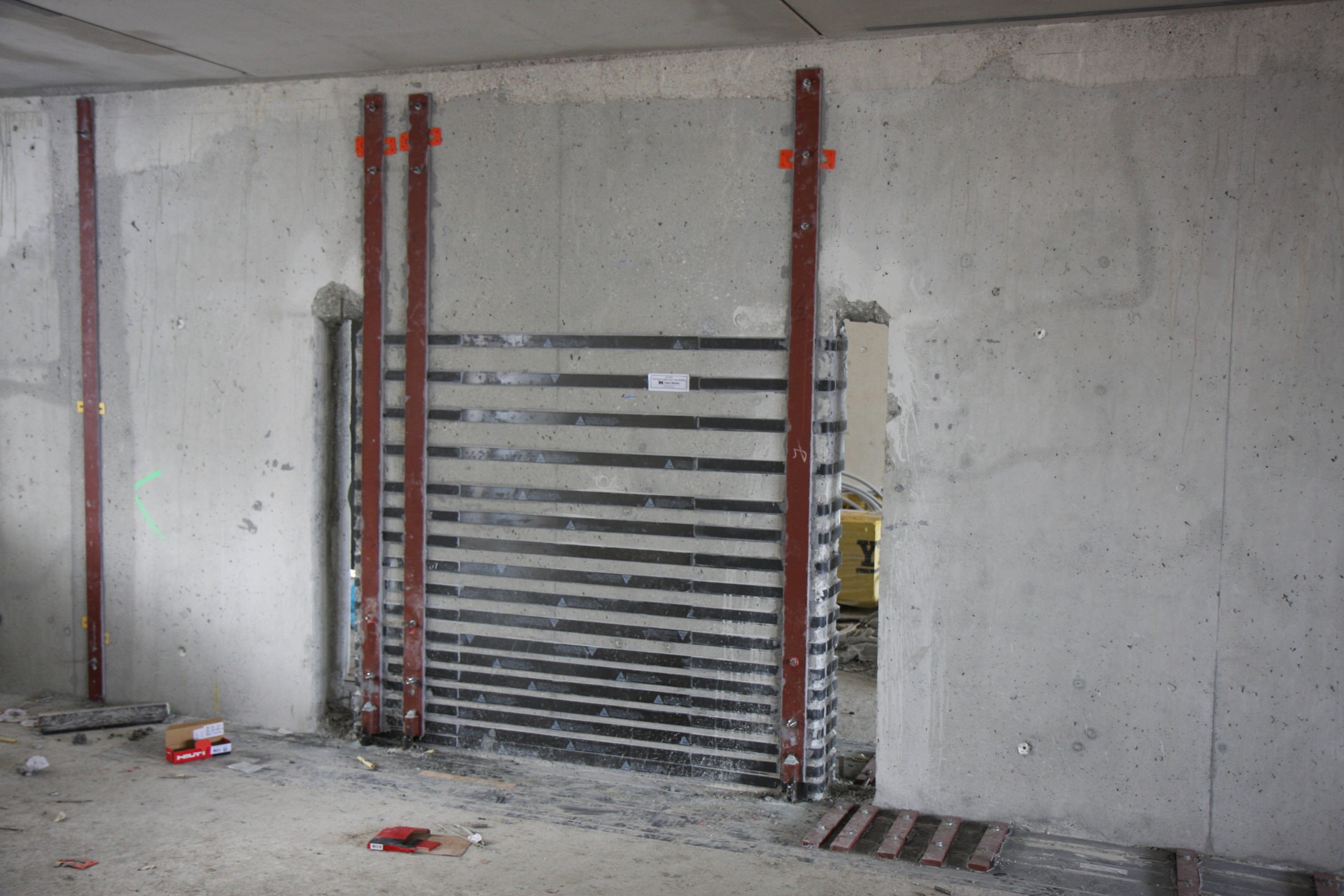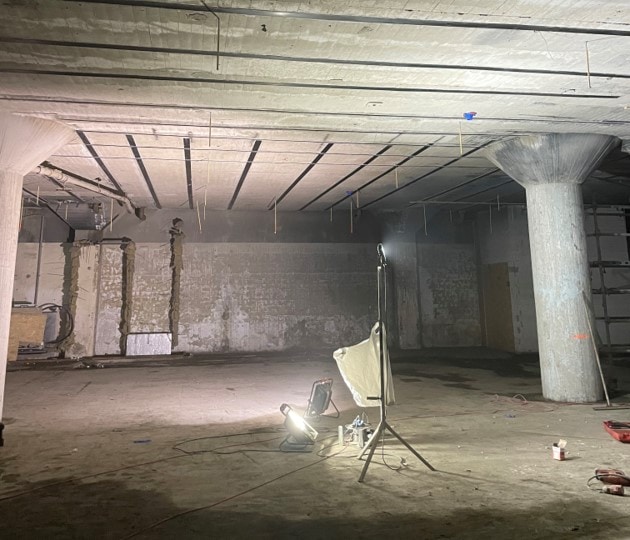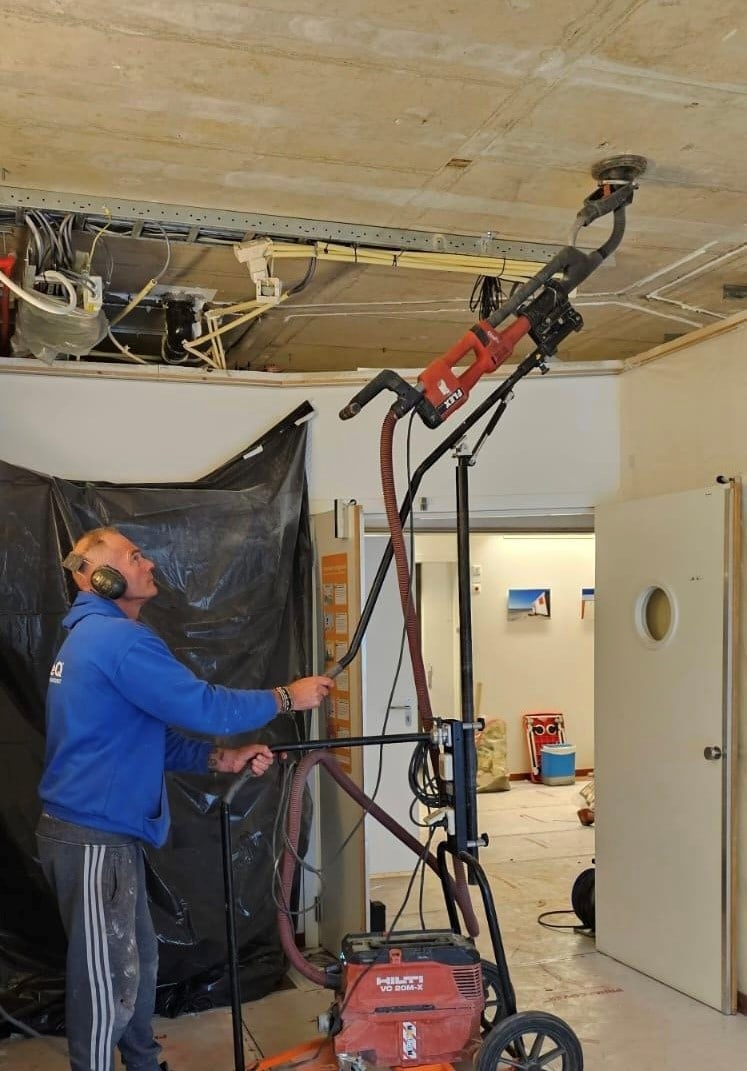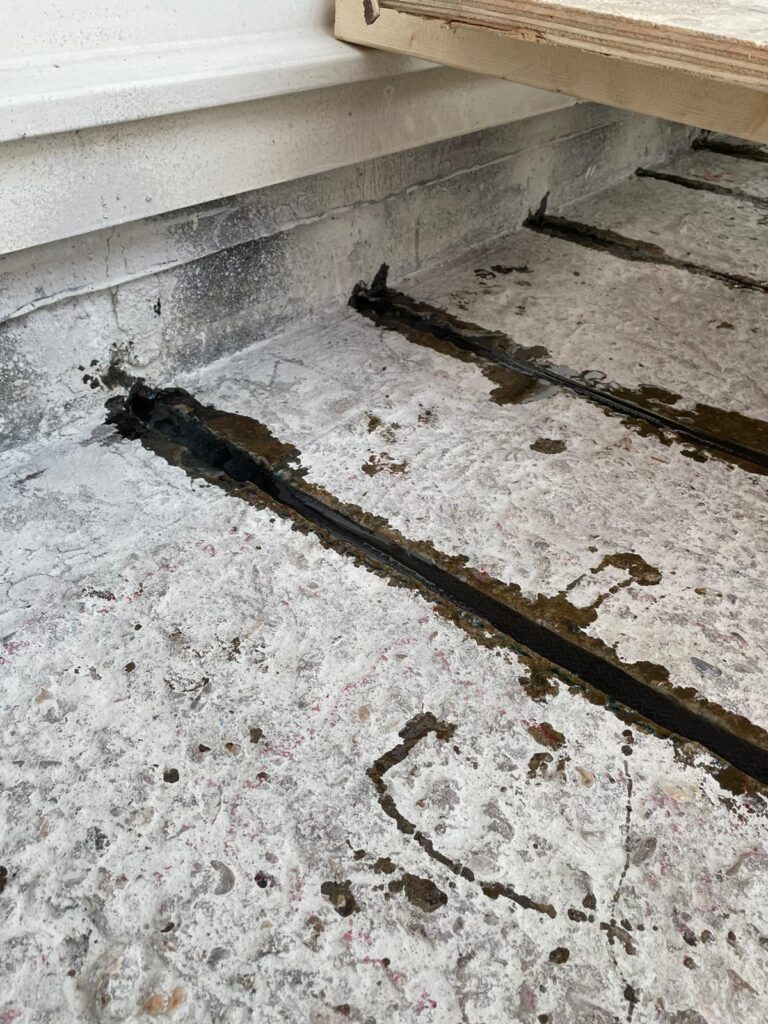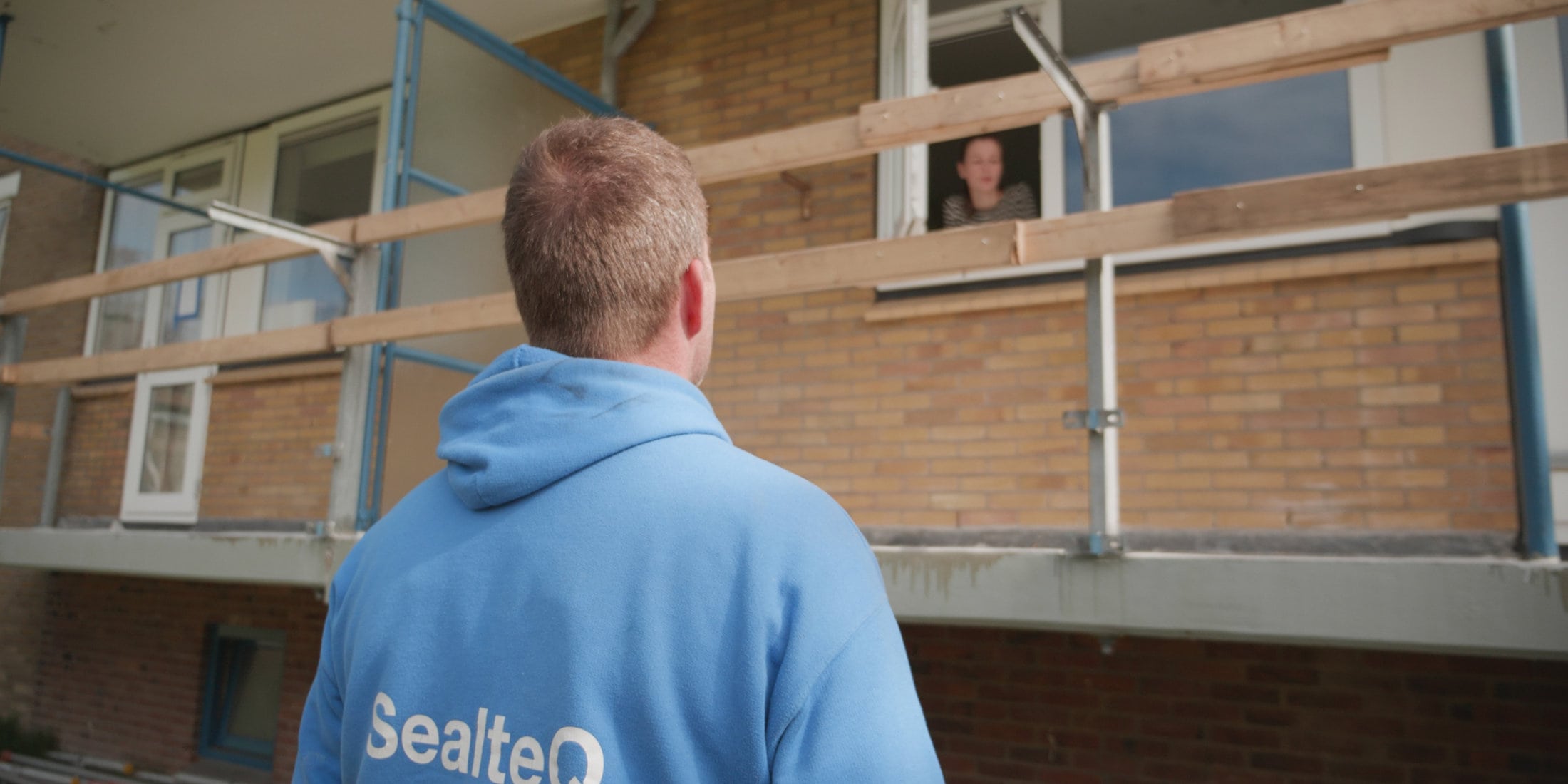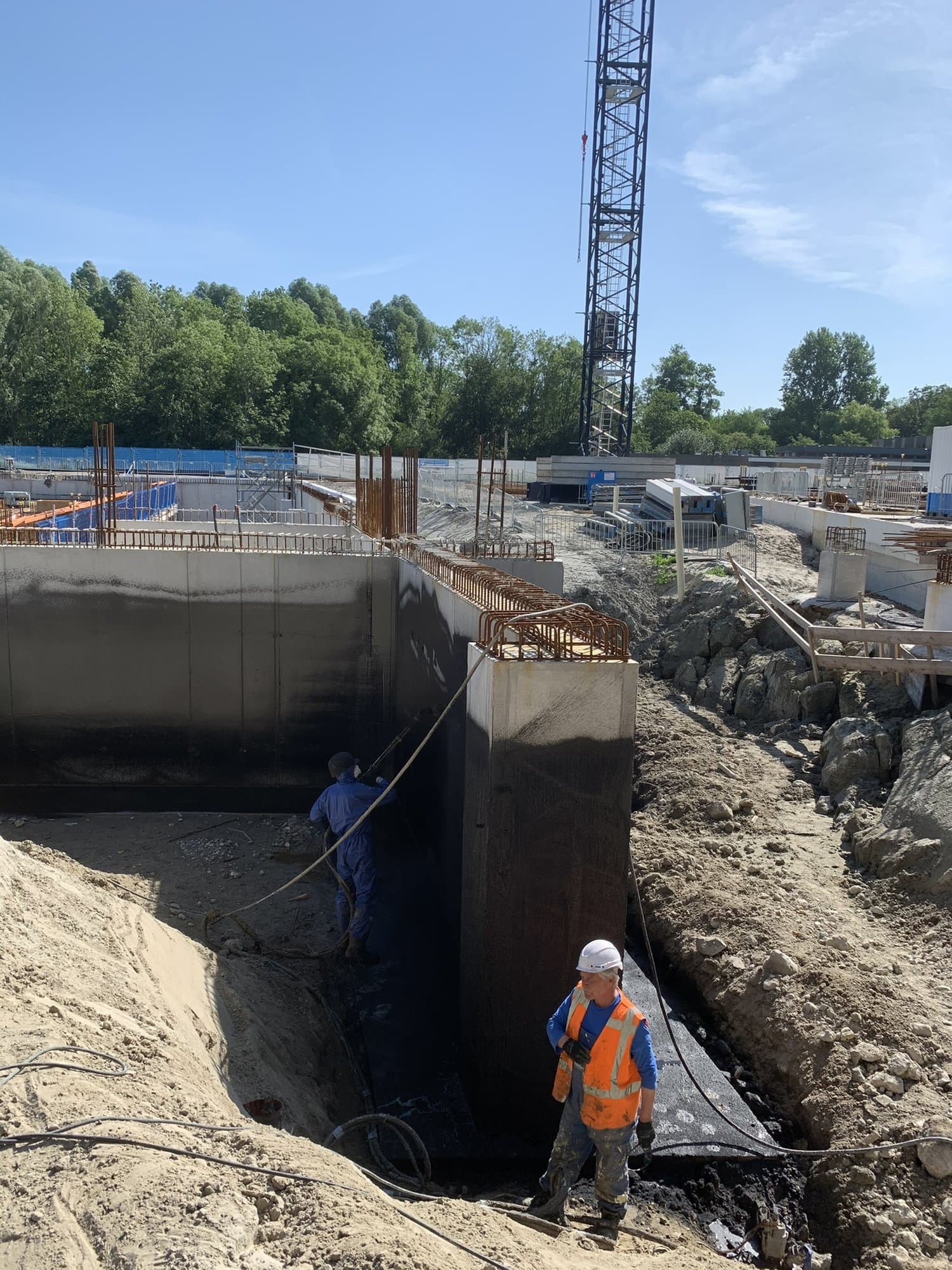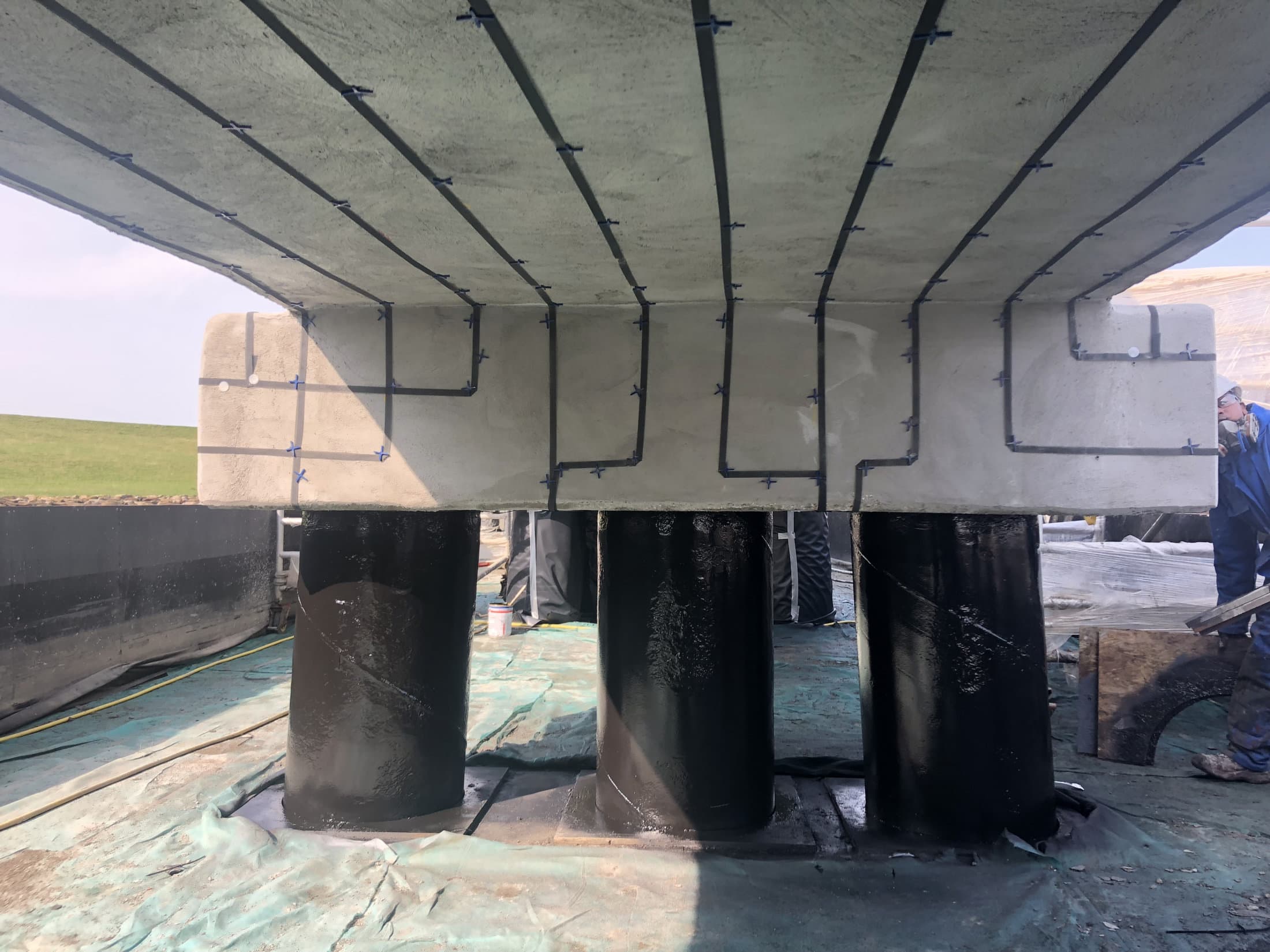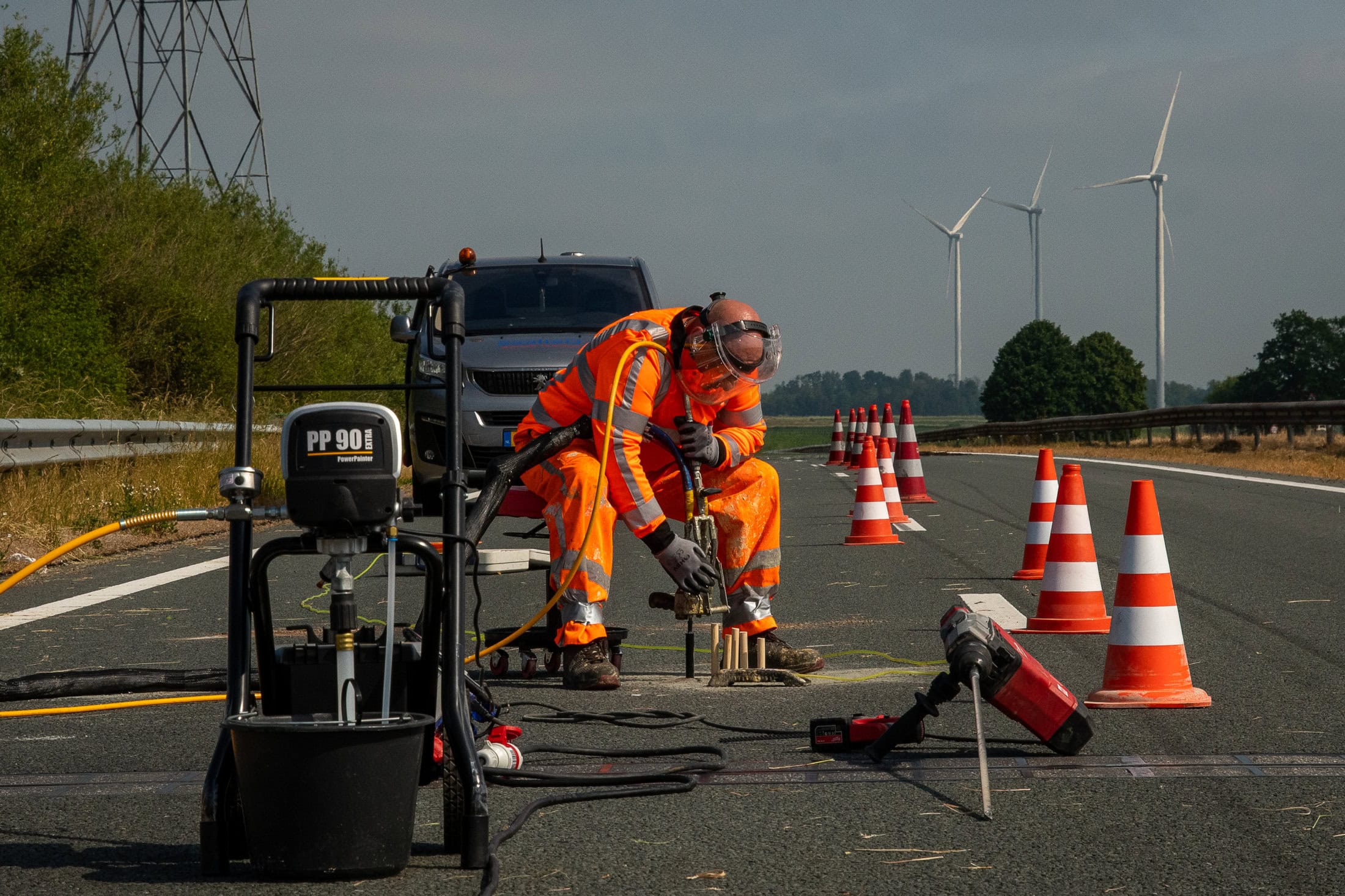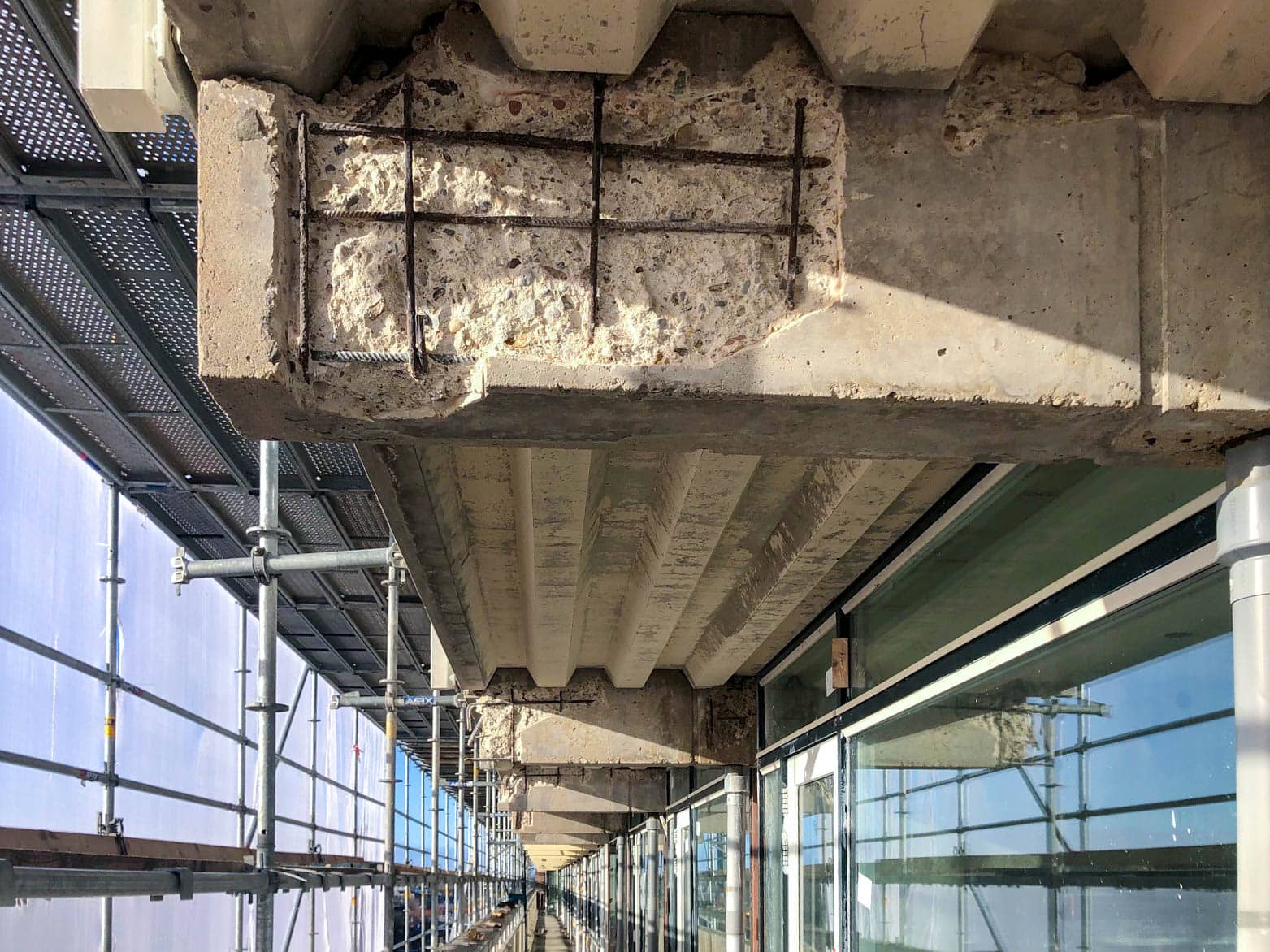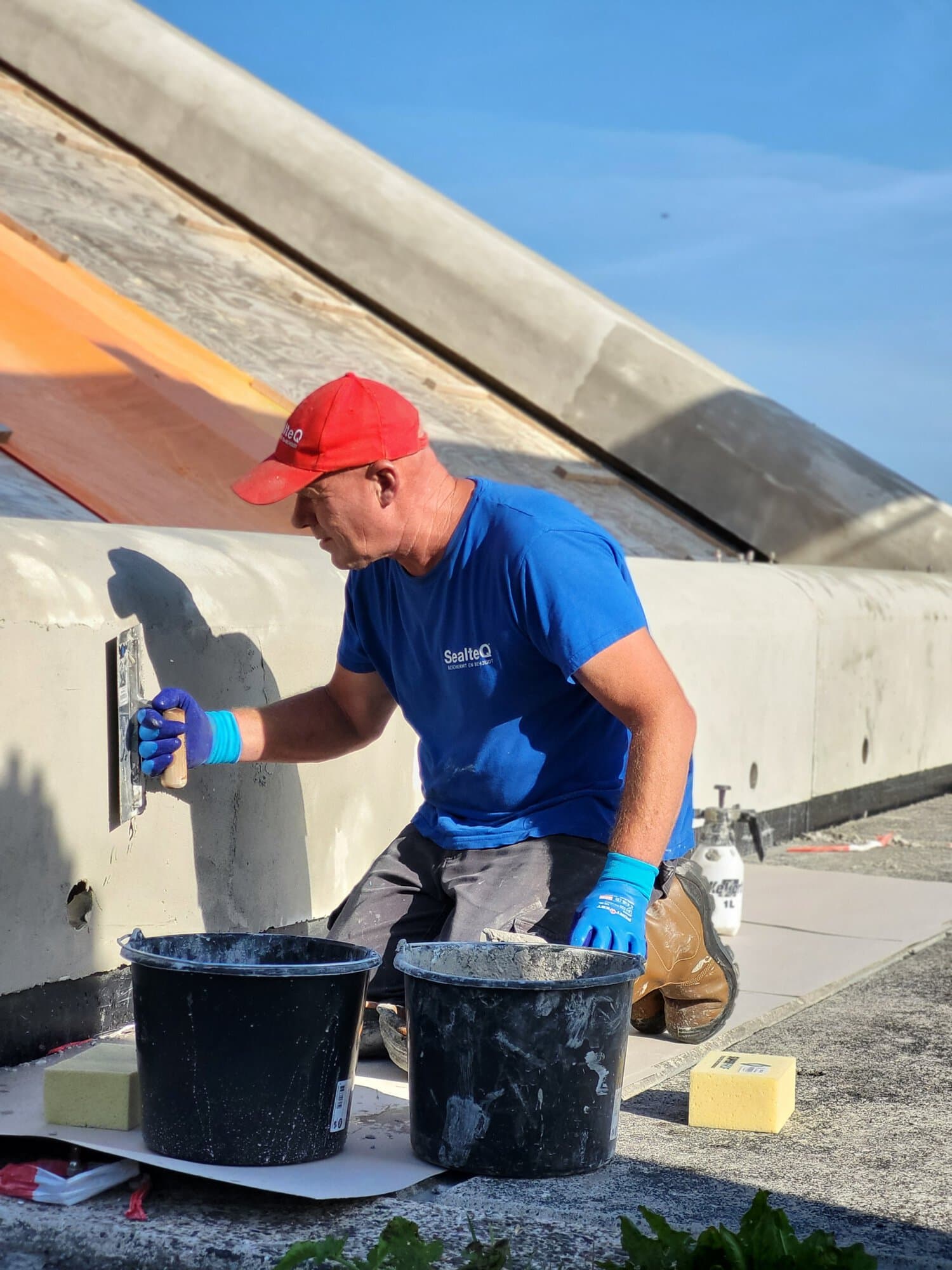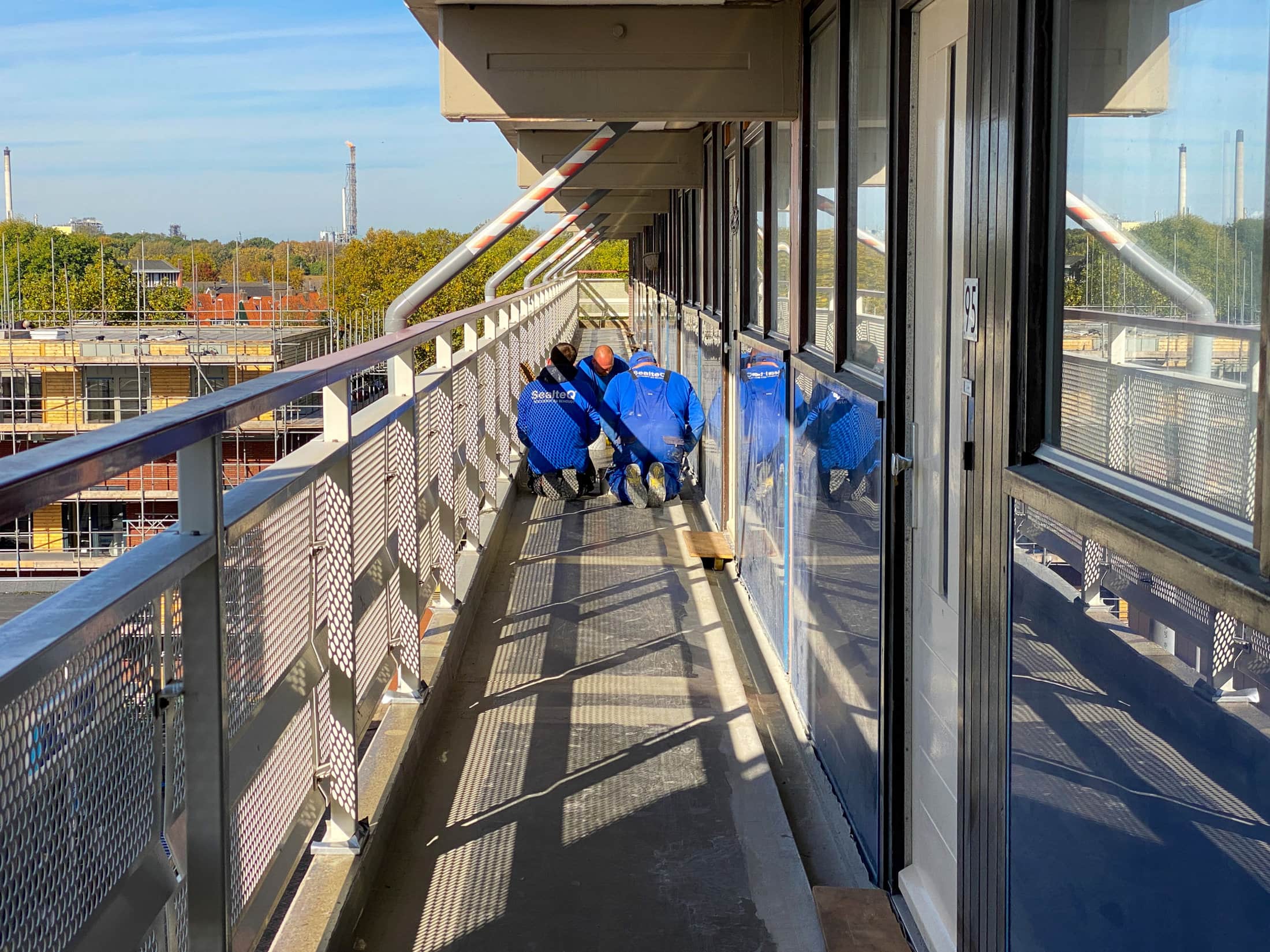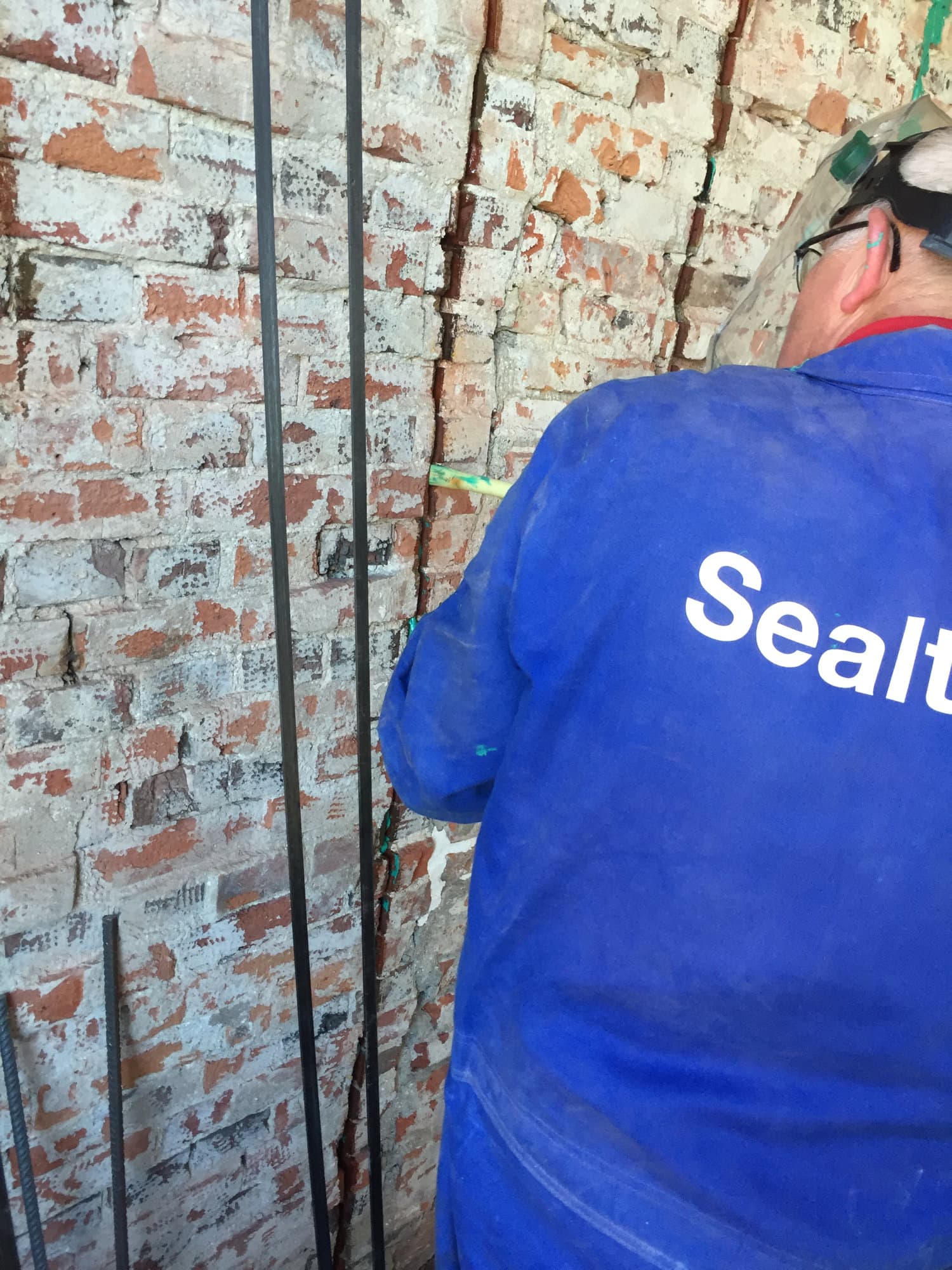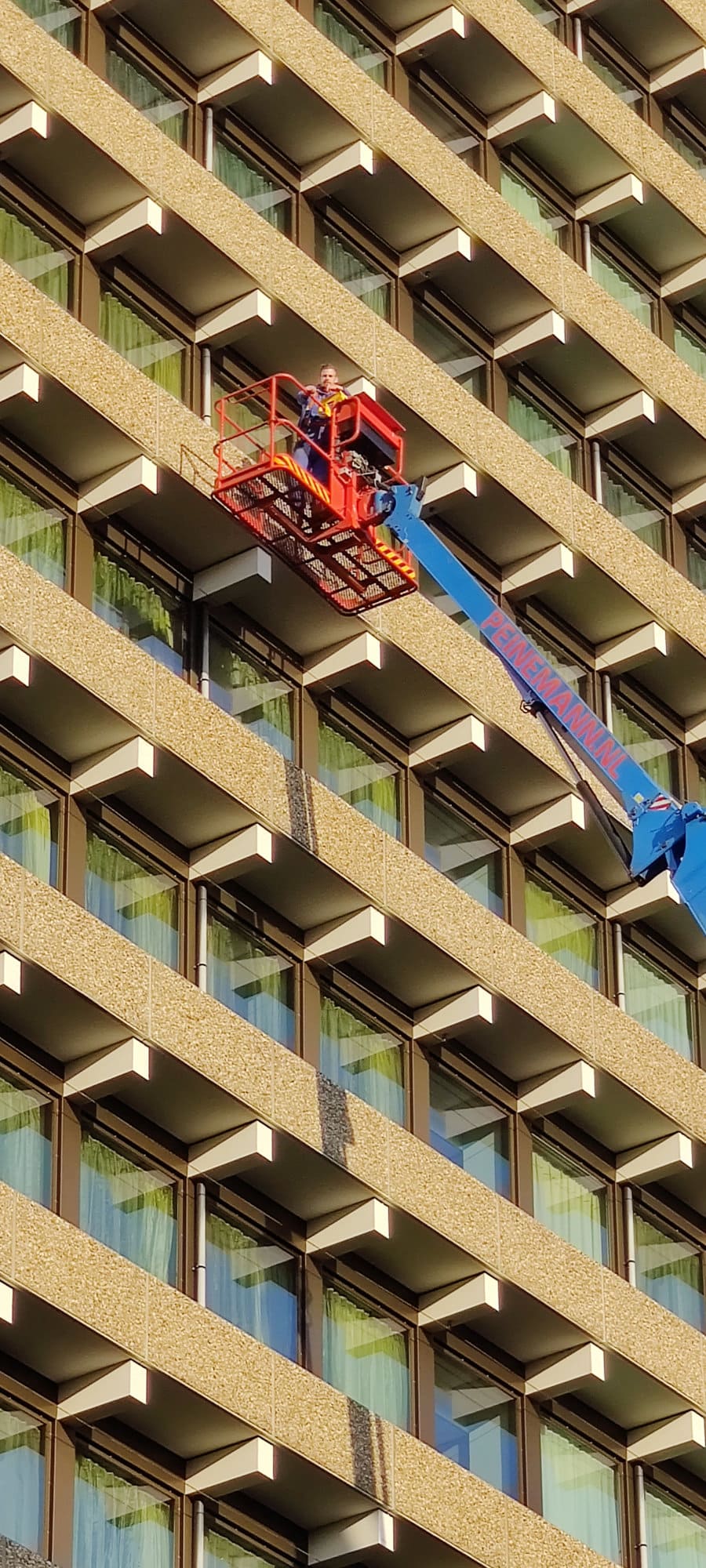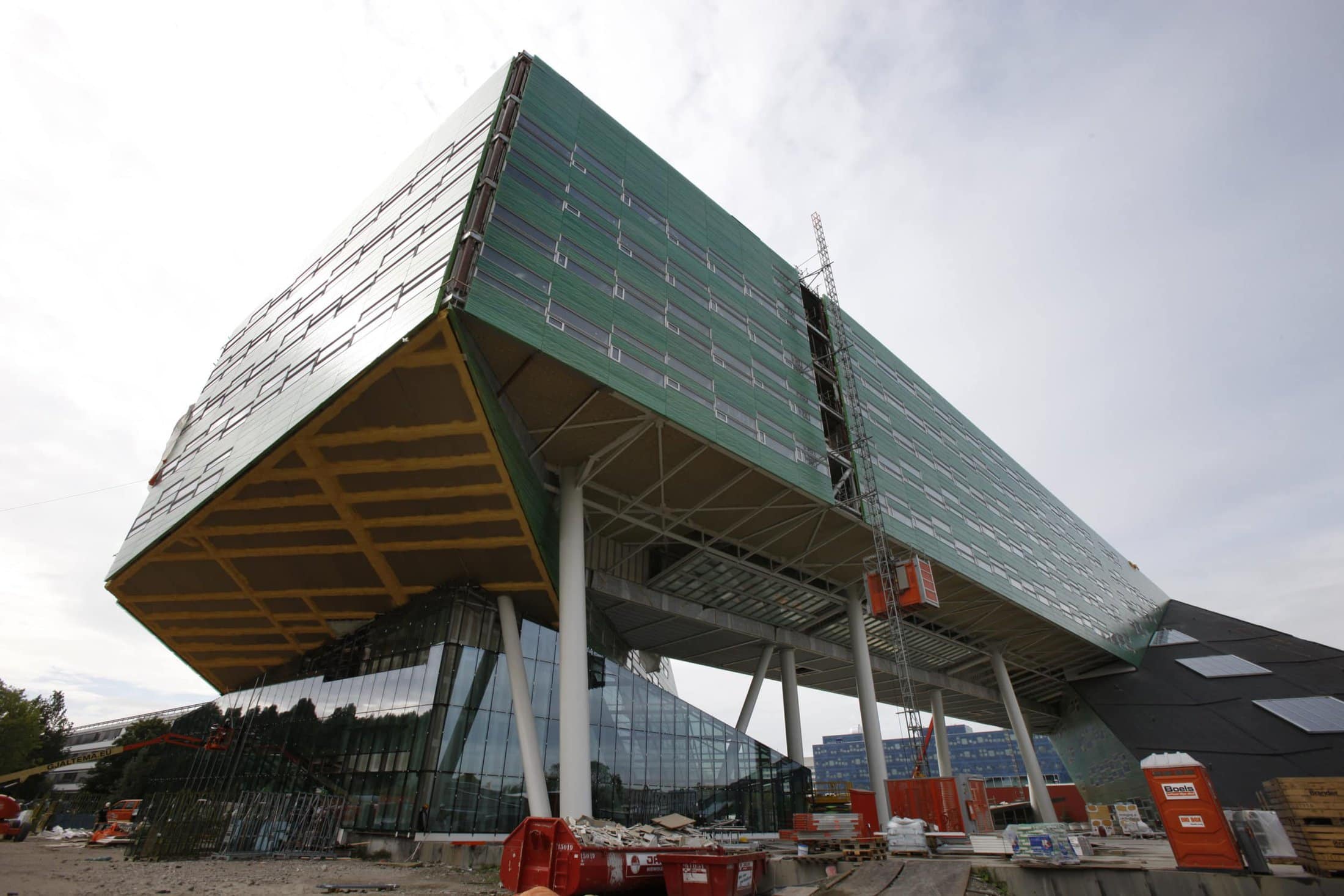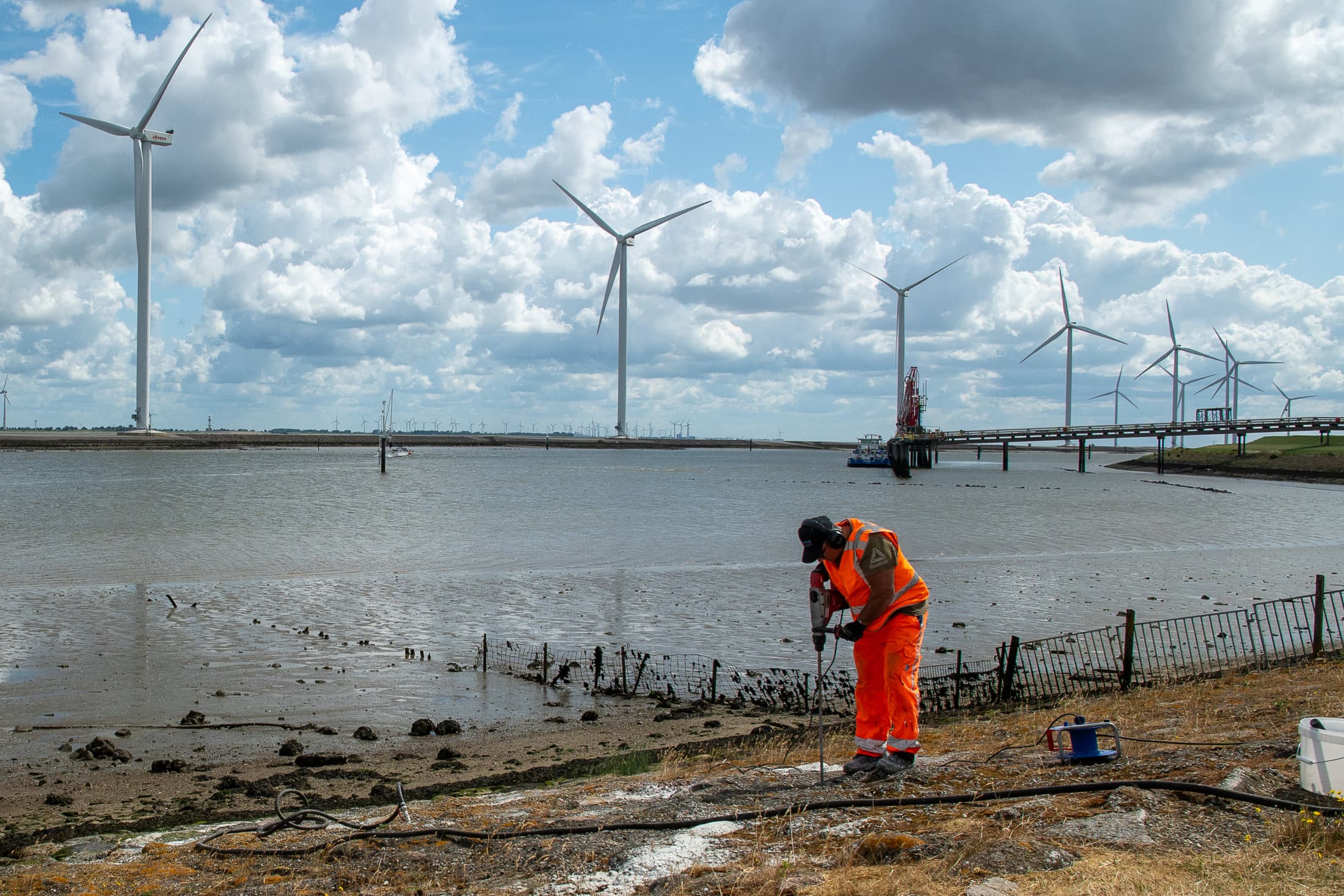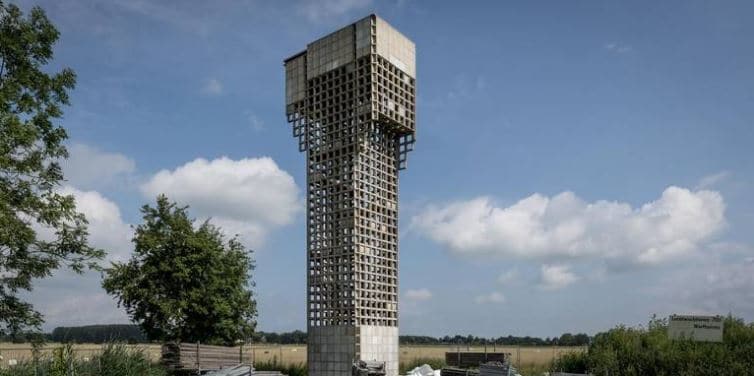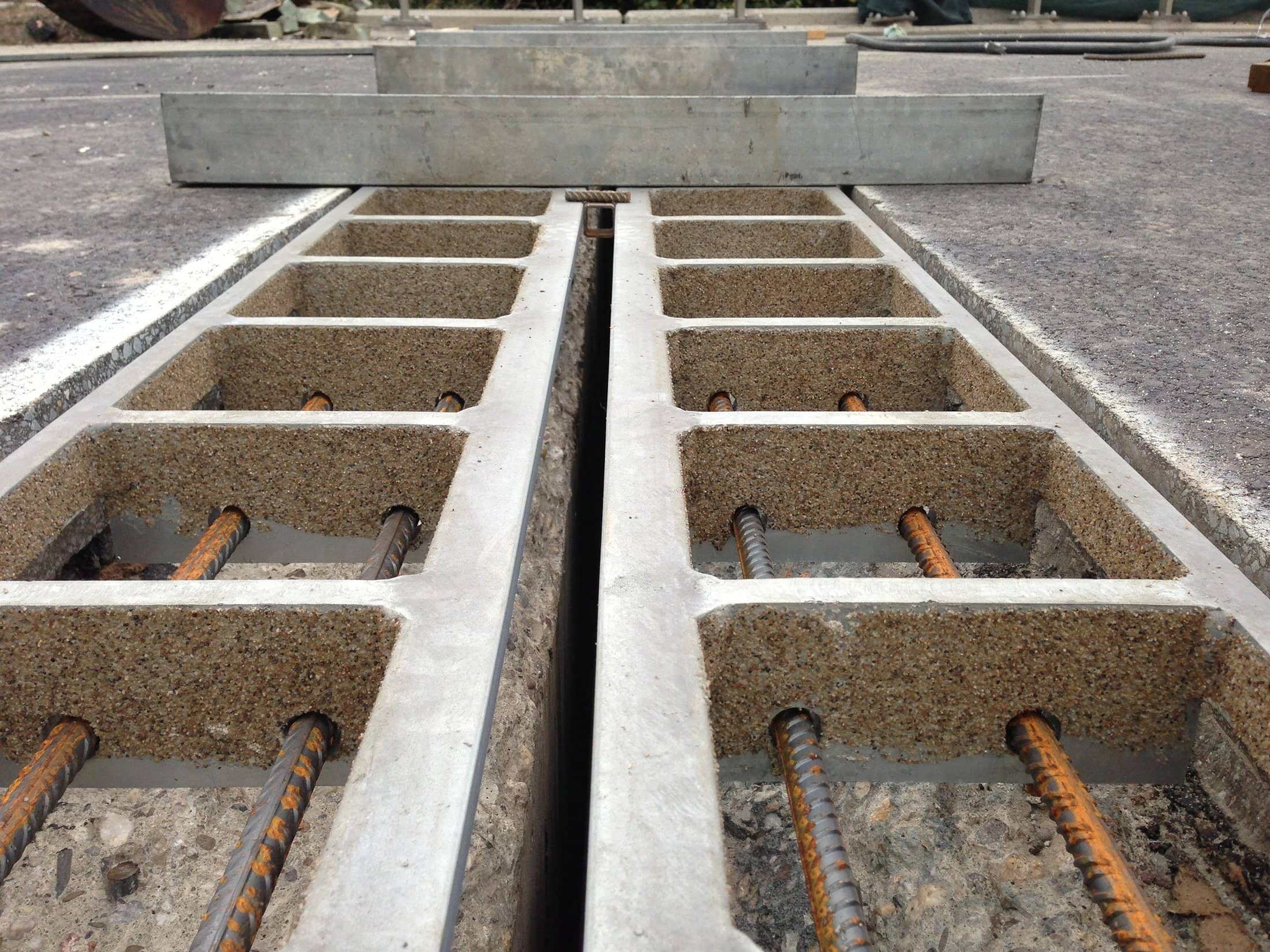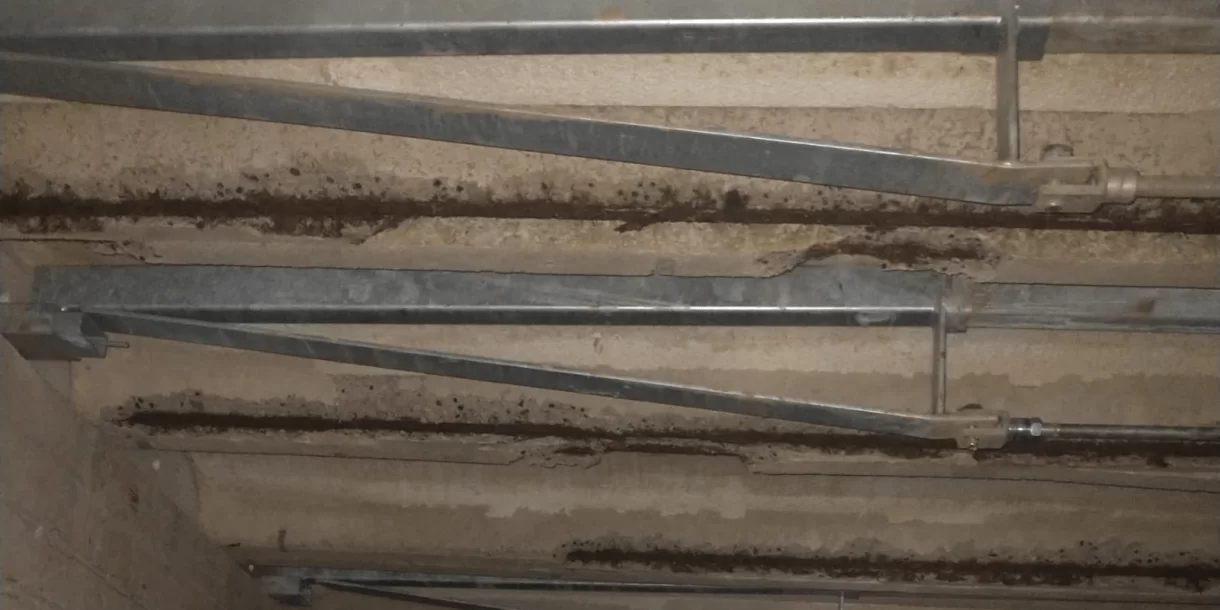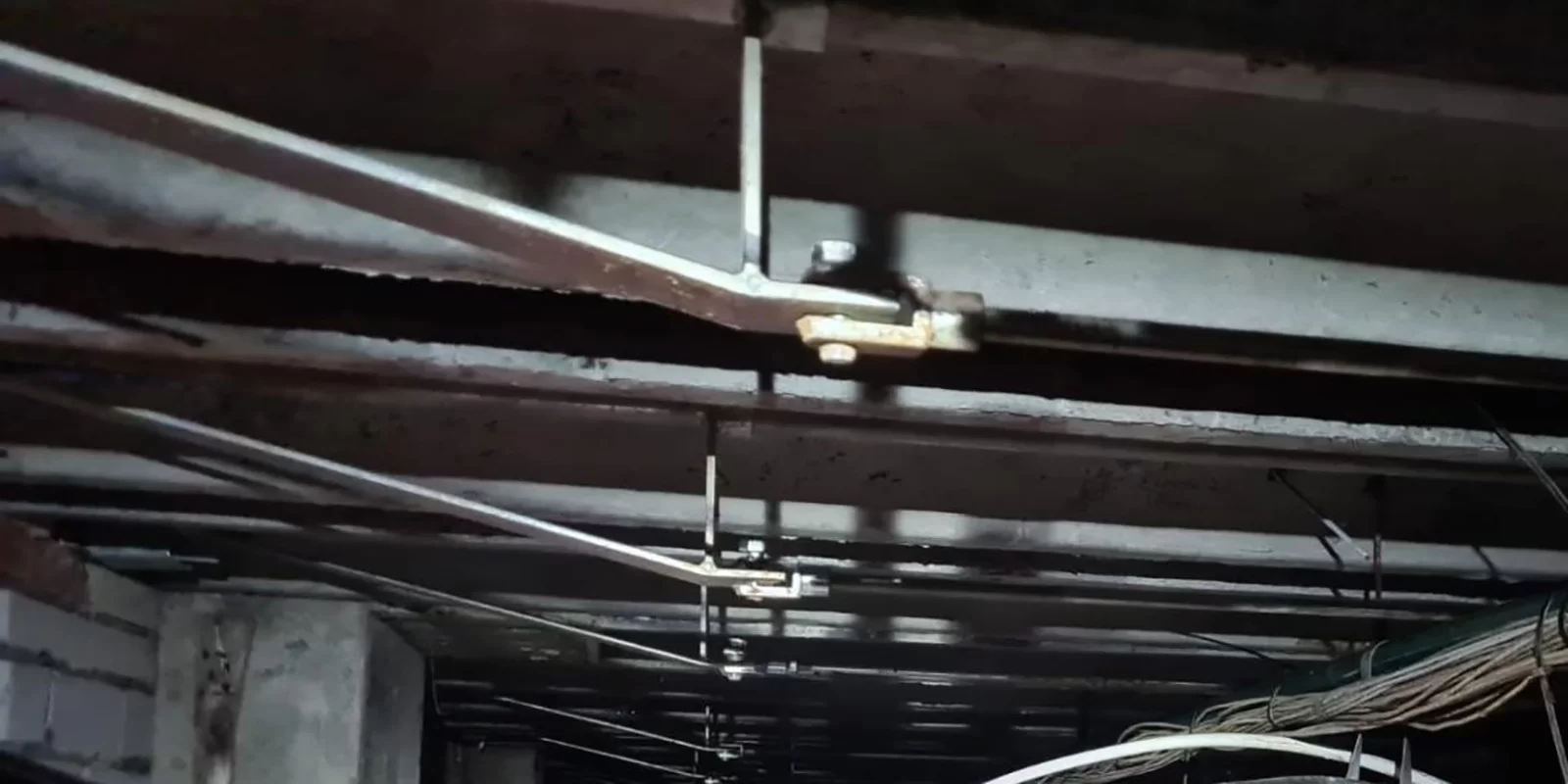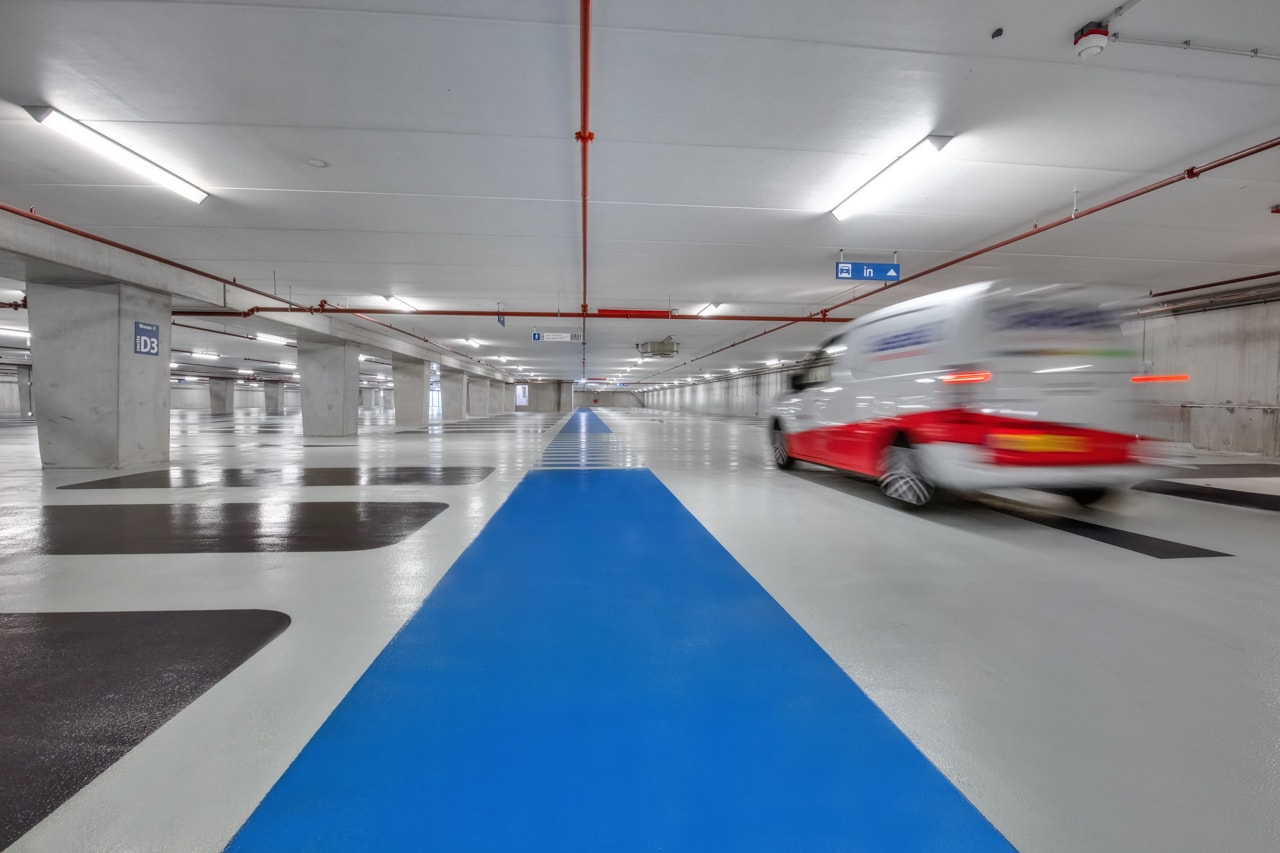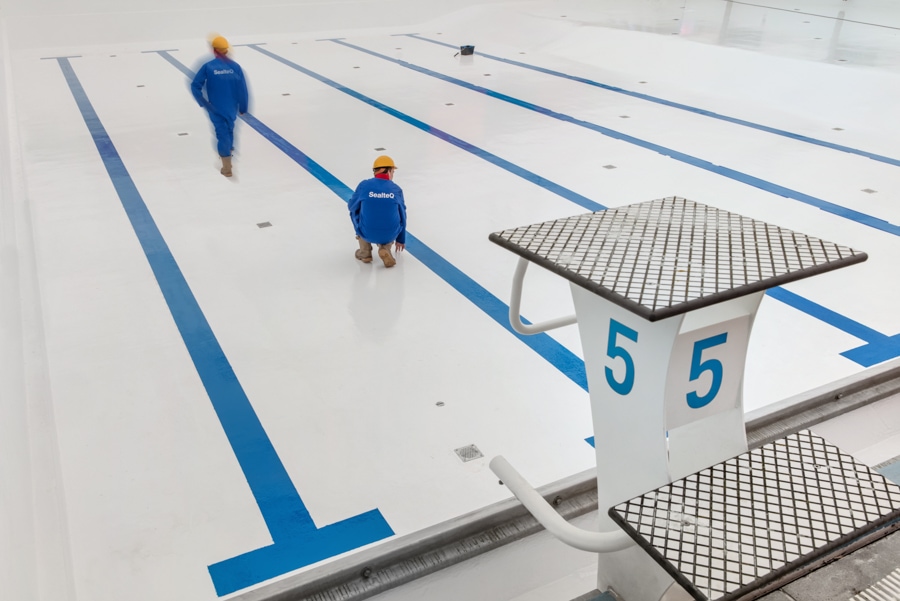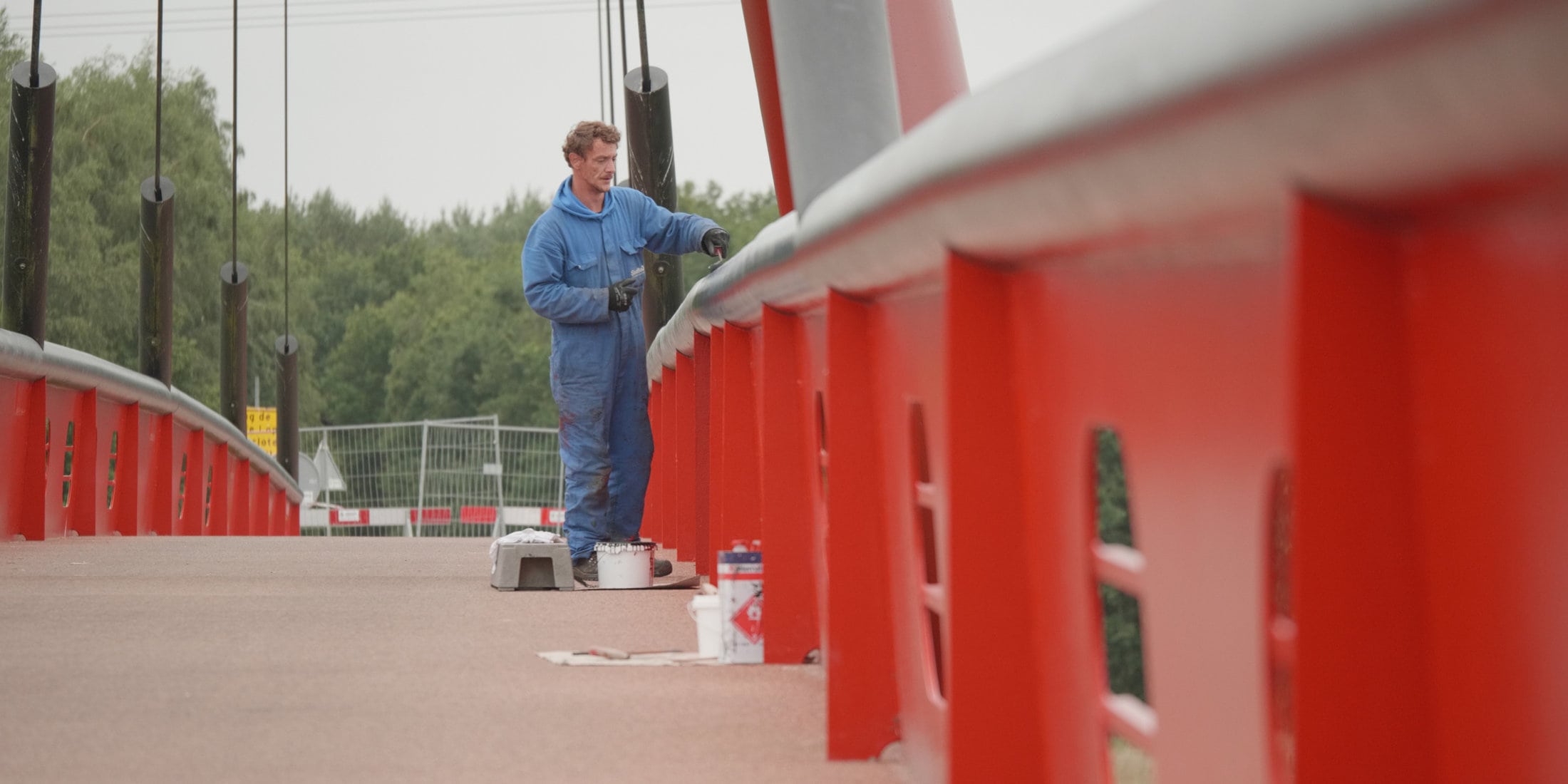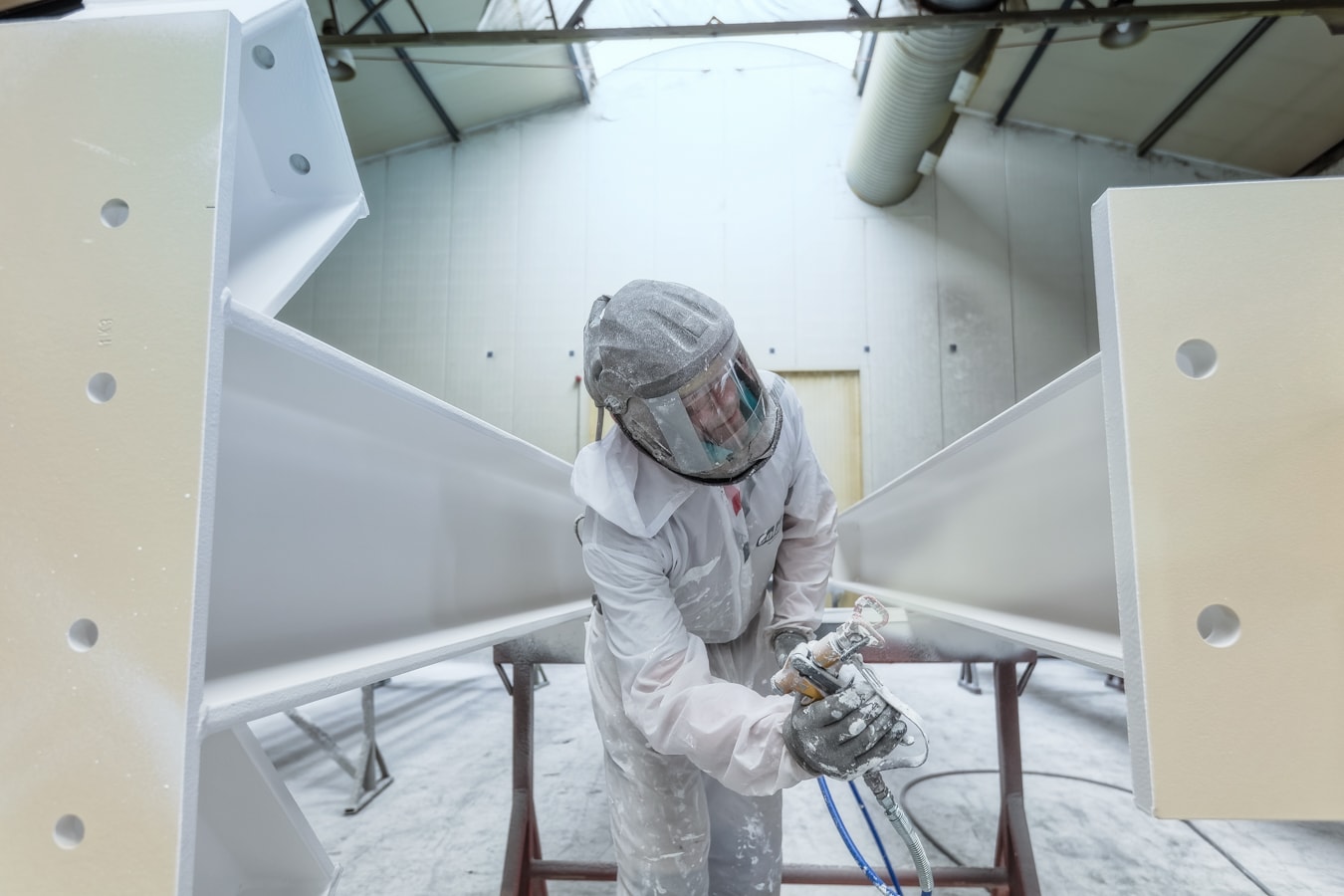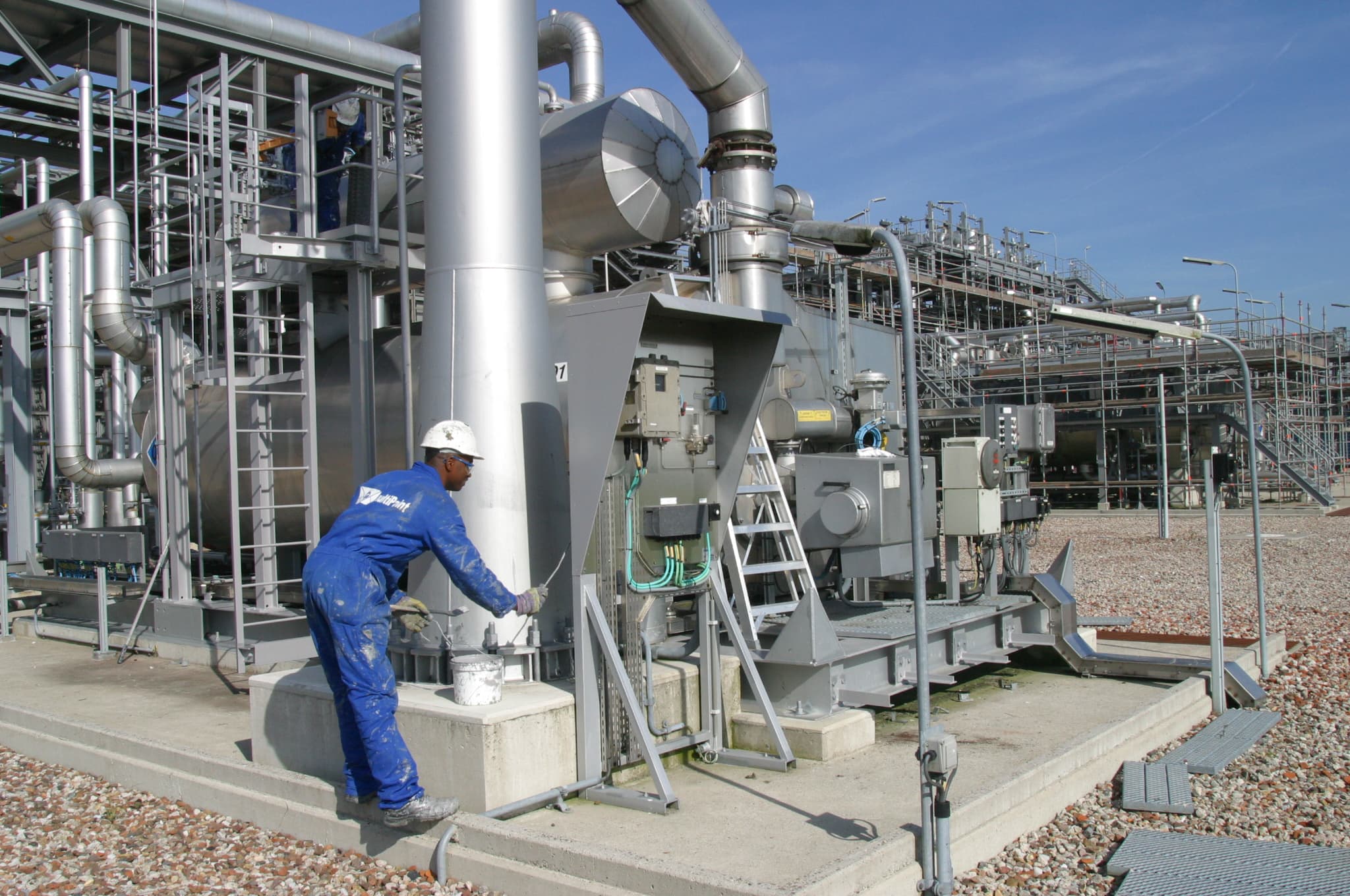Are you looking for a solution to strengthen and protect concrete and steel structures? SealteQ is ready to assist you with innovative techniques, including external carbon fiber reinforcement. Thanks to the high-quality properties of carbon fiber, this method offers a sustainable alternative to traditional reinforcement methods. Discover here how our specialists use carbon fiber adhesive reinforcement to ensure a stronger and safer structure of the building.

Carbon reinforcement
The application of carbon fiber reinforcement in construction
External carbon fiber reinforcement is used in various situations where strengthening is necessary. It is extremely suitable for structural reinforcement, crack repair, and seismic strengthening. In
We apply this technique when the live load (the weight on the structure, for example from furniture or vehicles) on beams, floors, and bridges is increased. Applications can range from floor reinforcements for new stairwells to increasing the load-bearing capacity of traffic viaducts. A plaster layer and/or fire-resistant coating can subsequently be applied over the adhesive reinforcement.
Advantages of External Adhesive Reinforcement
Thanks to the combination of very high strengths and low self-weight, the carbon fiber adhesive reinforcement can be easily placed to ensure the strengthening of the concrete structure. Carbon fiber is significantly lighter than traditional materials such as steel, thus barely burdening the structure. Moreover, it is resistant to corrosion, which extends the lifespan of the reinforced structures. The flexibility of the material makes it possible to apply it to various surfaces and shapes, contributing to the versatility of this technique.
When is carbon-fiber bonded reinforcement the right solution?
- When changes or improvements to existing structures are required.
- When removing walls or columns.
- When there is insufficient reinforcement or concrete cover.
- When the concrete structure has been damaged due to mechanical overloading, fire, or other incidents.
Adhesive-bonded CFRP reinforcement, or a variant thereof, is used in situations such as:
- When imposed loads on structural elements increase.
- When changes or modifications are made to the load-bearing structure.
- In cases of damage such as fire, mechanical overloading, or other incidents.
- For structural modifications where traditional strengthening of the concrete structure is not an option due to accessibility or other constraints.
Our Approach
1. Assessment and planning
The process of external carbon fiber adhesive reinforcement begins with a thorough assessment of the existing structure. This includes calculating the structural adjustment and the specific material technical properties of the reinforcement techniques. Additionally, any potential weak points are identified. Based on this assessment, a detailed plan is drawn up, in which we elaborate on all steps of the reinforcement.
2. Surface preparation
A crucial step in the process is the preparation of the surface. This involves thoroughly cleaning and leveling the surface to be reinforced to ensure optimal adhesion of the carbon fiber. This process is similar to the preparation applied in concrete repair and concrete renovation, where a clean and smooth substrate is essential for the durability of the repair.
3. Application of carbon fiber
After preparation, the carbon fiber is applied. This is done by applying a special adhesive to the surface, followed by carefully positioning the carbon fiber. The adhesive ensures a strong bond between the fiber and the surface, and the curing time of the adhesive varies depending on the specific circumstances of the project.
4. Quality assurance
After applying the adhesive reinforcement, we conduct extensive quality controls. This includes testing the adhesion and quality of the reinforcement. This quality assurance is essential to ensure that the application has been carried out effectively and sustainably.
Our standards and certifications
At SealteQ, we pay full attention to safety and sustainability when applying carbon fiber reinforcement. We want to continuously guarantee these important factors in all our
To comply with all relevant industry standards, we possess the necessary certificates. This ensures the quality and reliability of our services. Our methods and materials meet the highest safety and environmental standards, contributing to the sustainability and safety of our projects.
Our Experts
With a team of highly educated and experienced experts, we are committed to ensuring high quality and applying the latest technologies and methods. We continuously invest in the training and development of our employees, so that we always have the most up-to-date knowledge and skills.
Have carbon fiber reinforcement installed by SealteQ
Are you looking for a sustainable solution to strengthen and protect the concrete structure in your building? Discover the benefits of carbon-fiber bonded reinforcement, which enables our specialists to deliver durable, safe strengthening. Would you like more information or a quote? Please feel free to contact us.
Frequently asked questions about carbon fiber reinforcement
What is Carbon Fiber Reinforcement?
Carbon fiber reinforcement is a technique where carbon fiber is used to strengthen structures. This offers a sustainable and lightweight alternative to traditional reinforcement methods.
What is Carbon Fiber Reinforcement Used for?
It is used for structural reinforcement, crack repair, and seismic strengthening. It is suitable for applications in commercial buildings and hospitals, among others.
How Sustainable is Carbon Fiber Reinforcement?
Carbon fiber reinforcement is very sustainable due to the high strength-to-weight ratio and corrosion resistance of carbon fiber. This ensures a long lifespan of the reinforced structures.



